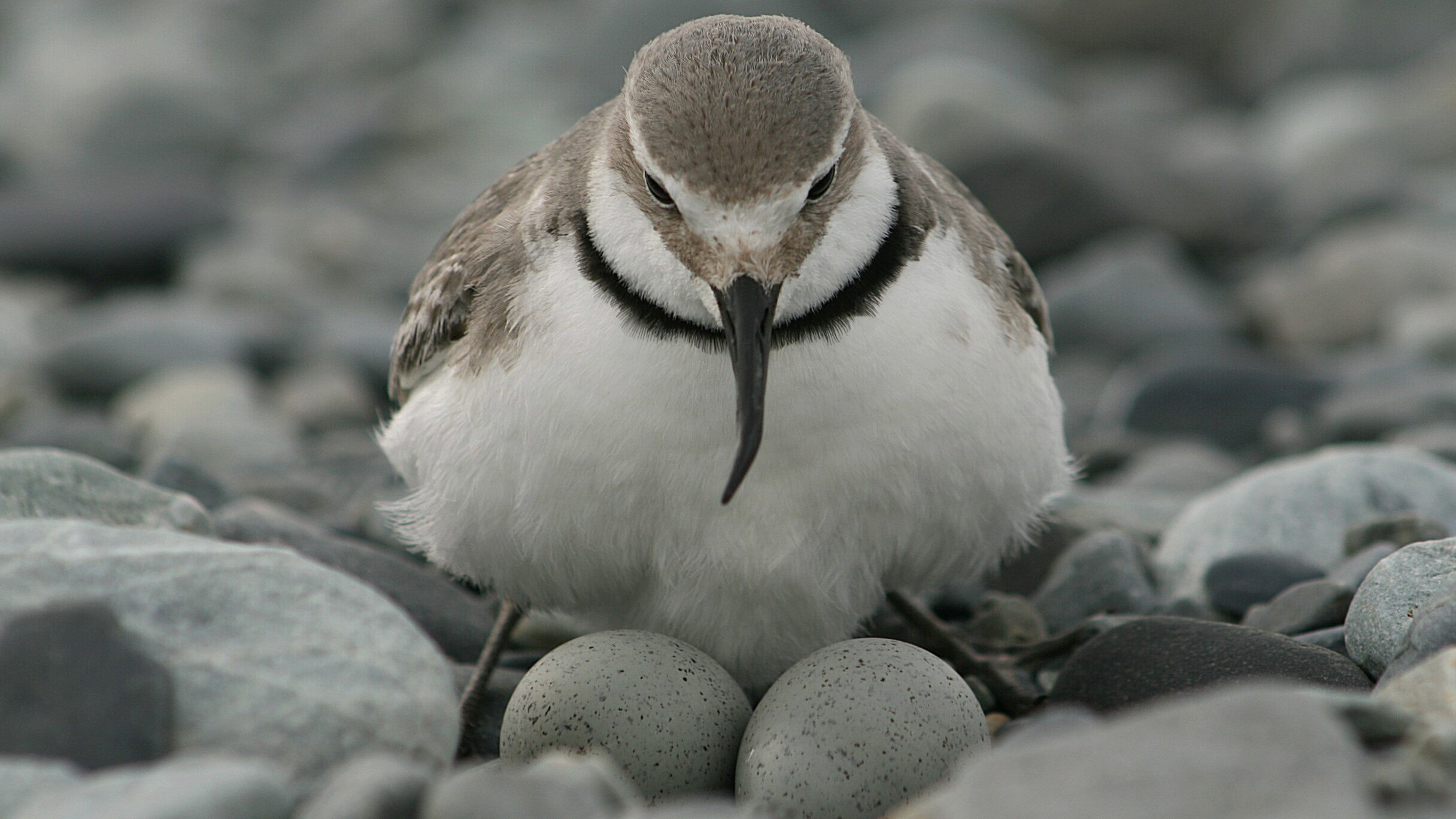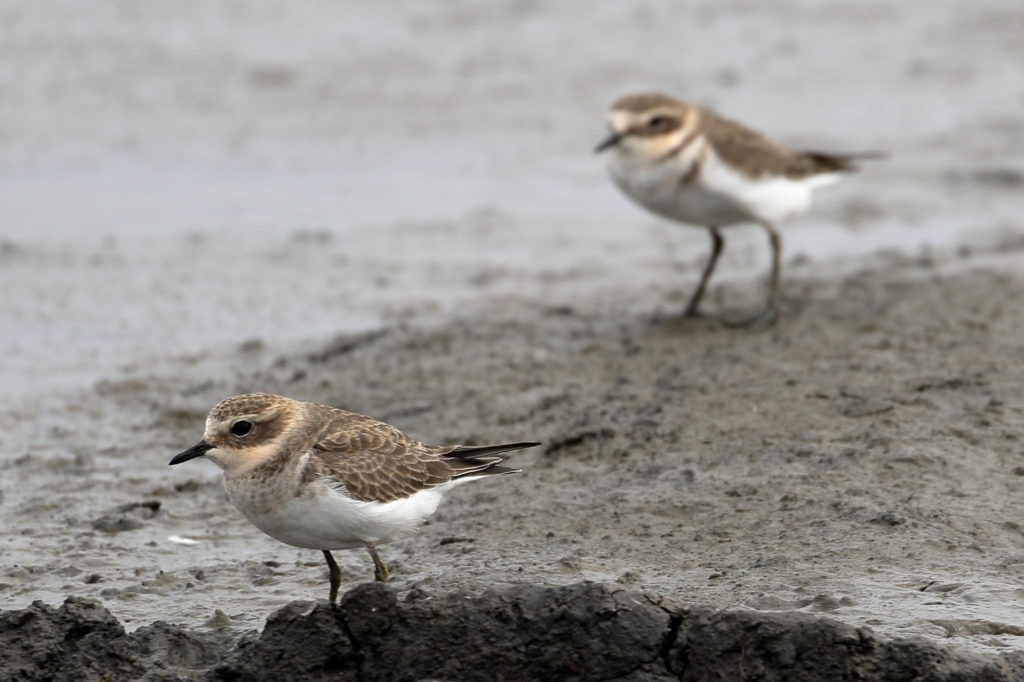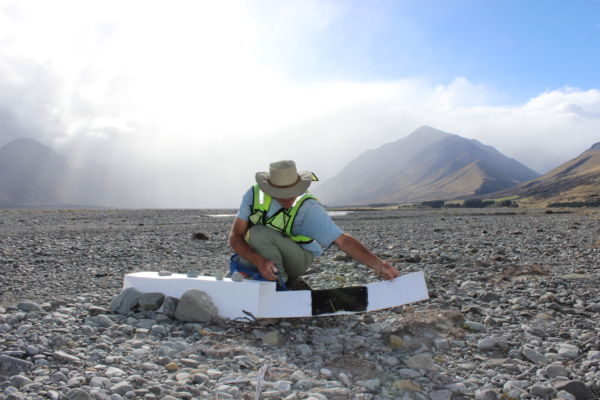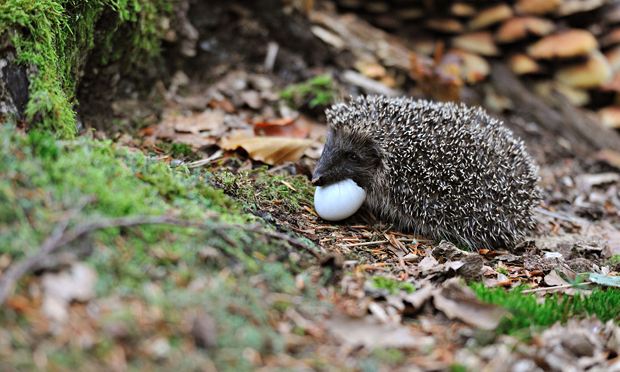To survive and succeed in the wild, every meal an introduced predator eats has to be worth the effort and energy it takes to obtain it. Bird eggs and young chicks are an easy, protein-rich food source, especially when birds nest on the ground. So how do you convince riverbed predators that ground nests are way too much effort and too unrewarding to bother with? You mess with their brains a little…

Grant Norbury from Manaaki Whenua–Landcare Research has been leading a team that’s testing and refining a new technique based on human behavioural science applied to mammal predators. Their research paper has been published in the journal ‘Science Advances’ and details how deliberate misinformation tactics can be used to influence the decisions predators make and so protect rare birds.
It’s all about the decision-making process. Making decisions involves using both previous experience and new information to guide optimal choices, as the authors explain.
“Information that proves useful or reliable motivates positive future responses, while useless or unrewarding information is filtered into the perceptual background and ignored thereafter. Tactical misinformation, or “fake news,” can succeed if it diverts the selective attention of decision makers by changing the perceived value of information.”
So what’s “fake news” in the riverbed world of predators and prey?
Introduced mammal predators rely strongly on their sense of smell to track down their next meal. So “fake news” can be a promising scent that doesn’t lead to the promised meal – a wild goose chase without a goose (or kakī) at the end.

“Predators depend on reliable information because they face considerable cognitive challenges in finding food in information-rich environments where much information about potential prey is unrewarding. Foraging optimally requires constant updating of an animal’s information state, so that only information with high probability of reward should be pursued when searching for food is costly. Signal detection theory predicts that if particular information about prey becomes unreliable, predators should abandon it in their search for food. Here, we test whether tactical use of sensory misinformation can be deployed to manipulate Bayesian updating strategies by animals and thereby reduce undesirable predator impacts on vulnerable prey.”
Why not just trap or bait for predators? It’s all about adding to the predator management toolbox and coming up with a way to combat those trap and bait-shy predators that elude capture.
“Predator management is a vexed problem globally because many predators provide vital ecosystem services but can sometimes affect other vulnerable species, leading to their persecution. To prevent extinctions, reducing predation by both native and non-native predators is an urgent priority, but current methods can cause ecological harm when predators are removed, are often ineffective and increasingly lack social license. New techniques to solve this dilemma are urgently needed.”
The research paper reports on the response of ferrets, cats and European hedgehogs to repeated exposure to three unrewarded bird odours (chicken, quail and kelp gull) before the arrival and during nesting of native ground-nesting shorebirds (double-banded plover, wrybill and South Island pied oystercatcher). The research was carried out over two breeding seasons in the Mackenzie Basin’s natural braided river ecosystems and also looks at the subsequent effects on shorebird hatching success (HS) and population projections over the longer term.

“We measured nest survival of wild, native birds, mostly double-banded plovers (81% of nests monitored), but also South Island pied oystercatchers (15%) and wrybills (3%) at four study sites from August to November in 2016 and 2017.”
The researchers used odour extracted from more than one species to increase the likelihood that predators would generalize between the prepared odour and the odour of real birds.
“Odour was extracted from thawed carcasses (freshly killed then immediately frozen) of wild kelp gulls, fresh carcasses of commercially available Japanese quail and feathers extracted from commercially available freshly killed domestic chickens.”
A simple solvent extraction method was used to collect the odours.
“Typically, up to 12 individual quails, four gulls, or a 5-liter volume equivalent of chicken feathers were placed in a 20-liter solvent-proof extraction vessel. Odour was extracted with approximately 4 litres of 1:1 dichloromethane:acetone (or enough to cover the bird carcasses) for approximately 12 hours. The solvent was removed by rotary evaporation at mild vacuum in a 40°C water bath. Dried fatty triglyceride material was decanted while still warm and in a liquid state.”
“Each extraction produced approximately 15 g of brownish quail material, 7 to 10 g of greyish gull, and 30 g of deep orange chicken material. Samples were reconstituted in Vaseline petroleum jelly to increase the persistence of the odour. We used a hot plate (approximately 50°C) to heat the Vaseline until it was liquid enough to allow mixing with the odour extract. Extract was added to achieve the desired concentration; for example, for 10% (w/w), we added 10 g of extract to 90 g of Vaseline to achieve a concentration that was just perceptible to human noses. The material was mixed thoroughly, transferred to plastic syringes, and stored at −20°C until required.”
The researchers used modelling to work out how best to deploy the odour misinformation throughout the riverbed environment. Ferrets, feral cats and hedgehogs cover different distances during their foraging expeditions, and this needed to be taken into account.
“Simulation modelling predicted that a single hedgehog would encounter 10 to 17 odour points, a cat 28 to 66 points, and a ferret 46 to 77 points over a 27-day period if odour was deployed on 40% of randomly selected points on a 100-m grid, with application rerandomized every 3 days . We deployed fresh odour every 3 days. To ensure that the odour was spread evenly across each site, we used a 50-m grid, and points receiving odour were no less than 100 m apart during each deployment session. The number of random odour points deployed during each deployment session ranged from 312 to 402 (mean: 379), depending on the size of the treatment area. This equated to about one odour point per 2.5 ha.”
It took three people about 7 hours to deploy odour at a single site.
“At every point, approximately 0.1 to 0.2 ml of the Vaseline matrix was smeared onto a small rock with latex gloves. On average, chicken odour was deployed at six consecutive points, quail odour at the next three points, and gull odour at the next single point, and then repeated. These ratios reflected the availability of the different odour types. Odour was applied for 26 to 40 days (average: 36 days) before egg laying began and continued for 45 to 56 days (average: 52 days) during nesting.”
Most predators seemed quick to learn that responding to the scent lures was a waste of effort.
“There was strong evidence for habituation to unrewarded bird odour by cats and ferrets before and during nesting. Interaction times with odour were initially high but declined after 12 to 18 days. By the time nesting started, interactions with odour were only 5 to 9% of their initial levels. Conversely, hedgehog interactions with odour rose steadily, peaking 18 days into the nesting season and declining thereafter. We first detected hedgehogs in camera traps 11 to 28 days after odour deployment began, suggesting that they were gradually emerging from hibernation during much of the increase phase in interactions.”
So did the fake news campaign increase hatching success of the monitored bird species?

“Odour treatments resulted in a 1.7-fold (range: 1.1 to 2.7) increase in HS (hatching success) of plover/wrybill nests and more than doubled the odds of successful hatching (mean odds ratio: 2.2; range: 1.2 to 3.6). Treatment effects persisted for 25 days. For oystercatchers, odour treatments also resulted in a 1.7-fold (range: 1.6 to 1.7) increase in HS and almost tripled the odds of successful hatching (mean: 2.8; range: 2.4 to 3.1). Treatment effects in this case persisted for 35 days.”
A 1.7-fold increase can make all the difference once you start looking at how that pans out over multiple years.
“Forecasted plover populations from a starting population of 1000 birds show an additional 743 individuals [606 to 881, minimum/ maximum differences in confidence intervals (CIs)] after 25 years of annual odour treatment, compared with population declines with no treatment.”
The researchers found that ferrets were the main nest-raiding predator on the Cass/Macaulay sites (62% of predations, 26% by hedgehogs, and 4% by cats), while hedgehogs were the main nest raiders on the Tekapo sites (73% of predations, 18% by ferrets, and 6% by cats).
“Our results demonstrate that predators rapidly learn to disregard unprofitable prey cues, providing a deceptively simple sensory technique that can significantly reduce predation rates and produce population-level benefits for vulnerable prey species. This approach offers new opportunities to mitigate the effects of mammalian predation on ecologically relevant scales by altering predators’ perception of prey availability without any direct interference with animals. The method avoids problems associated with current lethal approaches and safeguards native predators that affect threatened species.”
The researchers believe that the observed temporary increase in hedgehog interactions with bird odour was probably a response to emergence from hibernation in a hungry state at the time birds were arriving to nest.
So how does “fake news” compare with more conventional methods of predator management?
“Our modeling predicted that the observed 1.7-fold increase in nest survival over the first 25 to 35 days of the nesting season will change the trajectory of bird populations that would otherwise be in decline. This effect size benchmarks well against the doubling of prey responses to the removal of invasive predators using traditional lethal techniques when they are effective. Protecting nests laid in the first third of the nesting season provides a disproportionately greater fitness value because their survival is naturally higher than for nests laid later.”
What about other bird odour possibilities?
“We used three readily available bird odours, one, because we could not extract sufficient odour from local shorebirds, and two, because using more than one species increased the likelihood that predators would generalize between the prepared odour and the odour of real birds. Our results imply that, at least for ferrets and cats, individuals transferred their habituated response from these three bird odours to shorebird odour. Generalizing bird odours, rather than discriminating between species, is likely to enhance foraging efficiency and requires less cognitive effort when prey are similar, when similar hunting tactics are required, and when there are similar rewards.”
But hedgehogs might not be quite so easily fooled. Eggs are a protein-rich treat for them and, unlike cats and ferrets, hedgehogs can’t catch themselves a rabbit as a high-protein egg alternative.
“Our results show, counterintuitively, that the use of generalized prey recognition can be exploited to protect threatened prey species by creating virtual refuges from predation that result from a predator’s altered perception of prey availability when searching. The likelihood of generalizing bird odours, however, appears to vary between predator taxa depending on their diet and life history. Hedgehogs, for example, eat mostly invertebrates. Eggs are relatively highly nutritious, so giving up on eggs incurs a greater cost compared with ferrets and cats who eat a high calorie diet of rabbit. Hedgehogs may therefore be more discerning between unrewarded and rewarded bird odours and therefore less likely to generalize.”
The researchers found predator hunting strategies were unexpectedly easy to manipulate but had profound benefits for vulnerable prey. The operation costs also compare well with other predator management techniques.

“The cost of this method over the 66-day period from the start of odour deployment to the end of the effective treatment period (mean: 30 days) was about NZ $33 per hectare (including odour extraction). Comparisons with conventional lethal methods, such as trapping and poisoning, are difficult because costs are highly variable and context specific. Some trapping operations, if conducted over the same 66-day period, cost about NZ $35 per hectare (including purchase of traps) using live-capture leg-hold traps checked daily (the optimum trap type for cats) and lethal traps checked weekly. Trapping costs could be reduced considerably with less frequent checking, but additional costs would be incurred for leg-hold traps fitted with remote sensing equipment to indicate if an animal is captured and must be cleared.”
“The cost of some aerial deployments of toxic baits is similar (NZ $20 to $40 per hectare), but licensing in New Zealand is currently restricted to rodents (which also kills stoats via secondary poisoning but not cats). Some ground-based poisoning operations of predators may be cheaper (c. NZ $5 to $15 per hectare), but licensing is currently restricted to stoats and cats and is in the early stages of development.”
For anyone interested in finding out more, the full research report is published in ‘Science Advances’ and is freely available online.

